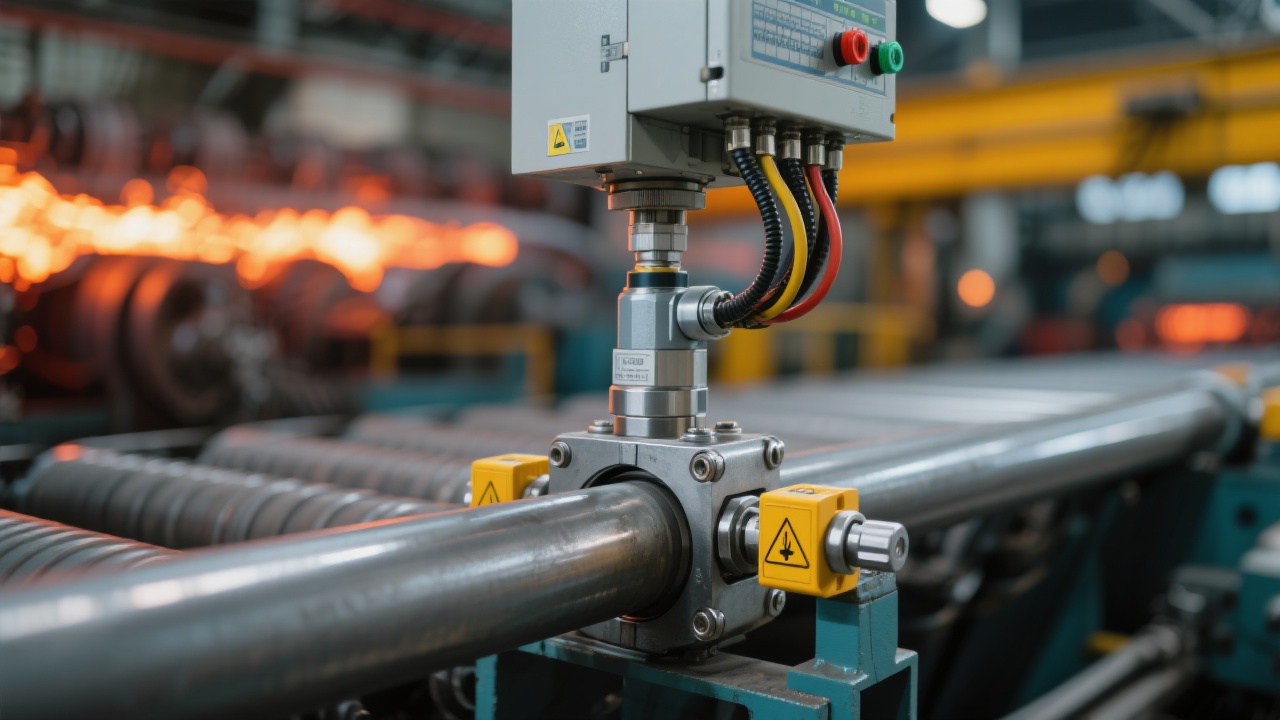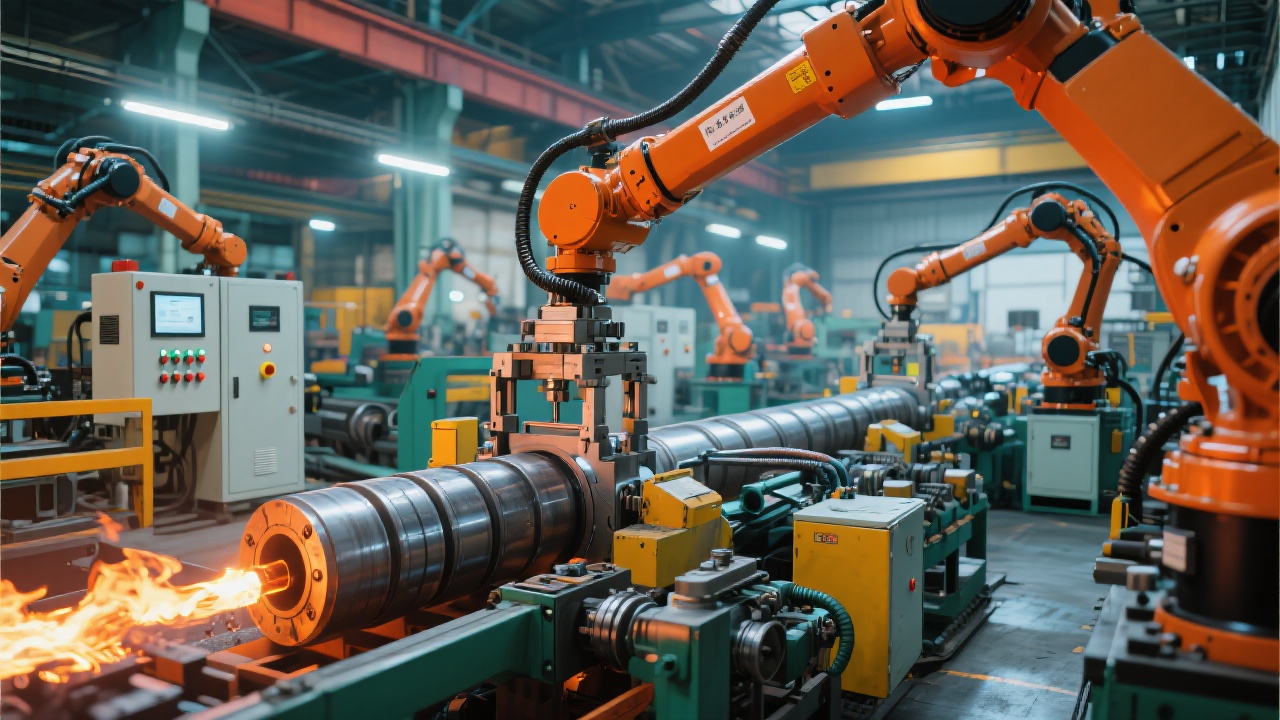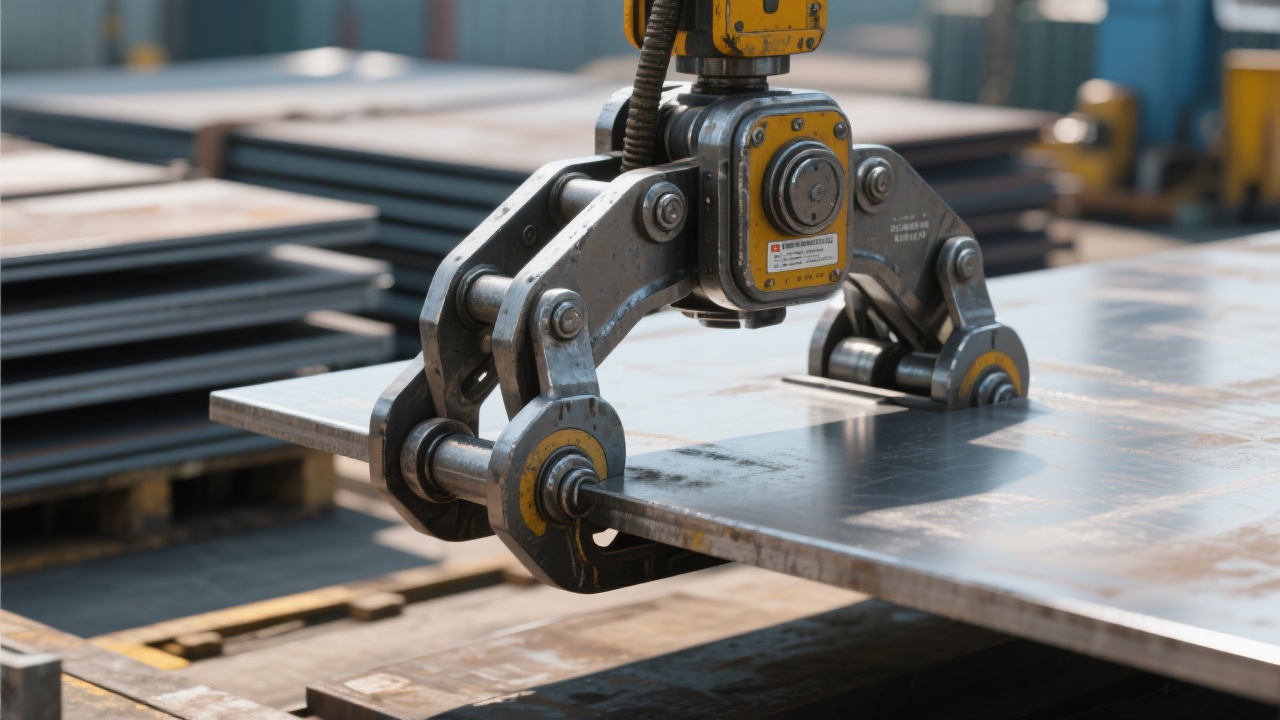
In the hot - rolling production line, Dalian Tiding Heavy Industry's independently developed hot - rolled high - temperature steel plate pneumatic durable slab clamps have shown excellent performance in automated integration applications. This article will delve into the details of this integration, aiming to help steel enterprises improve their automation levels and operational efficiency.
The automated clamps need to be seamlessly connected with the PLC control system, robot handling system, and AGV trolley. The signal interface and timing logic between them are crucial. For example, in terms of signal interface, the clamps need to send and receive signals such as open/close status, position information to these systems. The timing logic ensures that the actions of the clamps are coordinated with the operations of other equipment. For instance, when the robot is ready to pick up the steel plate, the clamps should open at the right time. The programming implementation details involve setting up communication protocols and writing code to achieve real - time data exchange.

Limit switches play a vital role in ensuring the consistent action of the clamps. Their main function is to accurately detect the position of the clamps, so as to control the opening and closing actions. The calibration steps of limit switches are as follows: First, determine the reference position of the clamps. Then, adjust the position of the limit switches according to the movement range of the clamps. Finally, conduct multiple tests to ensure the accuracy of the limit switches. Consistent action is of great significance for operational safety and efficiency. Inaccurate actions may lead to steel plate dropping, equipment damage, and even endanger the safety of operators.
During on - site debugging, several aspects need attention. In terms of air source pressure matching and adjustment, the air source pressure should be adjusted according to the specifications of the clamps. Generally, the pressure range is between 0.5 - 0.8 MPa. Anti - jitter and anti - misoperation measures are also essential. For example, adding damping devices or using software filtering algorithms can reduce jitter. Building a safety interlock mechanism can prevent misoperations. For example, when the clamps are not fully closed, the robot cannot start moving.

A well - designed safety interlock mechanism can enhance industrial safety and equipment reliability. The design idea includes setting up multiple safety levels. For example, when the power supply fails, the clamps should be able to maintain a safe state. When the position sensors detect abnormal positions, the equipment should stop immediately. This mechanism can be implemented through hardware circuits and software programs.
Let's take a steel enterprise as an example. After using Dalian Tiding Heavy Industry's automated clamps and following the above - mentioned integration methods, the enterprise has significantly improved its operational efficiency. The production line downtime has been reduced by 30%, and the safety accidents related to steel plate handling have been reduced by 50%. According to customer feedback, the consistency of the clamp actions has greatly improved the accuracy of steel plate handling.

In conclusion, Dalian Tiding Heavy Industry's hot - rolled high - temperature steel plate pneumatic durable slab clamps have great potential in the hot - rolling production line automation. By understanding the integration details, limit switch calibration, and on - site debugging skills, steel enterprises can solve the safety and precision problems in hot - rolled high - temperature steel plate handling. If you want to learn more about our products and solutions, click here to contact us.

